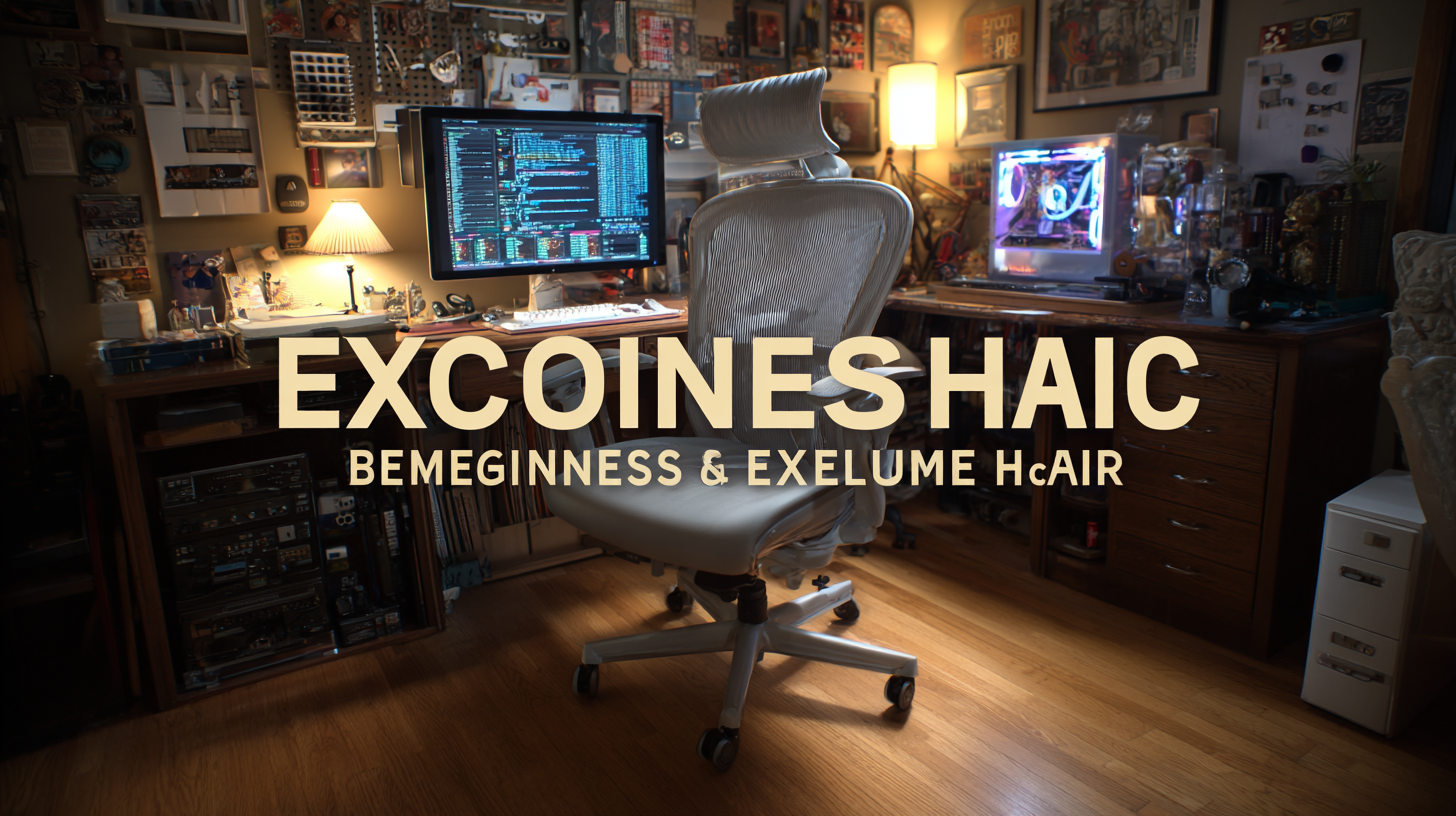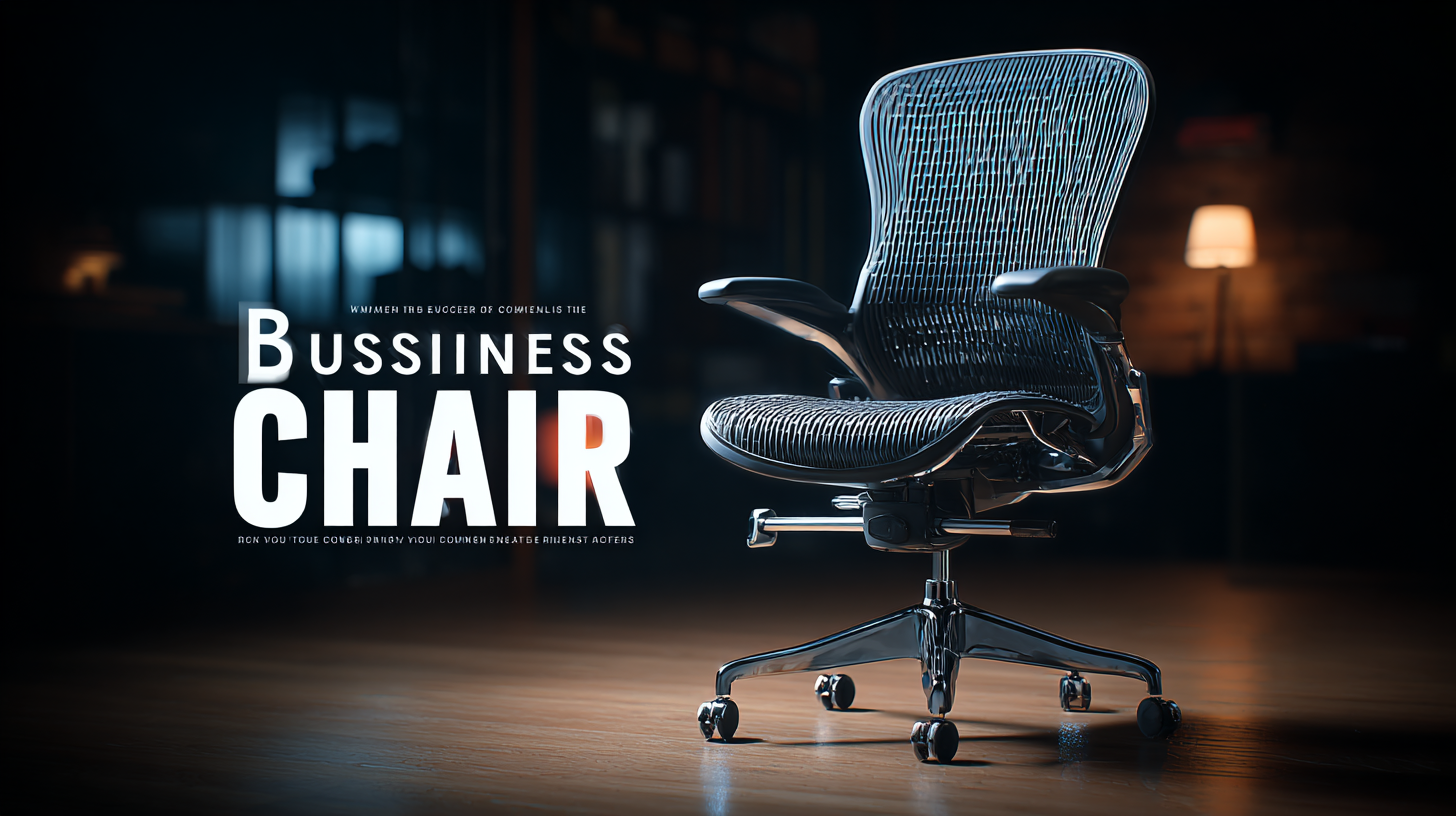Unlock Ergonomic Excellence: A Deep Dive into the Specifications and Setup of the Best Business Chair
In today's fast-paced corporate environment, the significance of a well-designed business chair cannot be overstated. With hours spent at a desk, the right ergonomics can greatly impact productivity and overall health. This blog delves into the essential features and specifications that characterize the best business chairs, helping you navigate the myriad options available.

We'll explore various types of business chairs, from executive models to task chairs, each tailored to fit different needs and workspaces. Additionally, we'll provide a comprehensive guide on how to optimize your chair's setup to ensure maximum comfort and support. Join us on this journey to unlock ergonomic excellence, enhancing both your well-being and work efficiency with the perfect business chair choice.
Understanding Ergonomics: Why It Matters in the Workplace
In today’s fast-paced work environment, where employees often spend long hours seated, the importance of ergonomics cannot be overstated. Ergonomics is the science of designing workspaces and equipment to fit the user’s needs, enhancing both comfort and productivity. An ergonomic workplace not only reduces the risk of musculoskeletal disorders but also improves employee morale and efficiency. This becomes particularly vital for businesses as they look to maximize output while maintaining a happy and healthy workforce.

Understanding how ergonomics impacts the workplace begins with recognizing the role of proper seating. The best business chairs are crafted to support the natural curvature of the spine, encourage good posture, and reduce strain. Features such as adjustable seat height, lumbar support, and armrests can significantly affect how employees feel throughout their workday. Investing in ergonomic designs fosters a culture of care, showing employees that their well-being is a priority, which can lead to lower turnover rates and higher productivity. Ultimately, making ergonomic choices in the workplace transcends mere comfort; it’s an investment in the long-term success of both the individuals and the organization.
Key Features to Look for in an Ergonomic Business Chair
When selecting an ergonomic business chair, it's crucial to consider several key features that significantly impact comfort and productivity. According to the Global Workplace Analytics report, ergonomic office chairs can reduce discomfort by up to 50%, leading to increased employee satisfaction and productivity. Look for adjustable seat height, lumbar support, and a reclining backrest. These features not only accommodate different body types but also promote healthy posture throughout the workday.
Tip: Ensure that the chair allows for a 90-100 degree angle in the hips and knees. This posture helps maintain blood circulation and reduces fatigue during long hours of sitting. Additionally, consider the chair's material; breathable fabrics can prevent sweating and enhance comfort during hot weather.
Another important aspect is the chair's armrests, which should be adjustable and positioned to allow your arms to rest comfortably at about a 90-degree angle. Research from the American Chiropractic Association suggests that proper arm support can reduce strain on the neck and shoulders, contributing to overall ergonomic excellence.
Tip: Test the chair in-store or ensure a good return policy if purchasing online, so you can assess its comfort and fit to your specific needs. Prioritizing these features will lead to a healthier and more productive workspace.
Step-by-Step Guide to Properly Adjusting Your Business Chair
When it comes to creating an ergonomic workspace, the proper adjustment of your business chair is crucial for your comfort and productivity. Start by setting the chair height to ensure your feet are flat on the ground, with your knees bent at a 90-degree angle. This not only promotes good circulation but also helps maintain proper posture while sitting. Your thighs should lightly touch the seat of the chair, allowing for adequate support without pressure on the back of your knees.
Next, pay attention to the backrest. Adjust it to align with the natural curve of your spine, providing essential lumbar support. Ideally, the backrest should support the lower back, allowing you to sit back comfortably while keeping your shoulders relaxed. If your chair has adjustable armrests, position them so that your arms can rest comfortably with your elbows at a 90-degree angle. This will reduce strain on your shoulders and neck, facilitating a more relaxed working posture.
Taking the time to carefully adjust each aspect of your chair can lead to significant improvements in your overall work experience.
Maximizing Comfort: Additional Accessories for Your Chair
When it comes to enhancing your office chair setup, investing in additional accessories can significantly maximize comfort and improve your overall work experience. Ergonomic cushions, for instance, can provide extra lumbar support and promote better posture throughout long hours of sitting. Options like memory foam seat pads are designed to contour to your body, reducing pressure points and making your chair feel customized to your needs.
Furthermore, consider adding adjustable armrests and footrests to your chair. These accessories not only help to align your body correctly but also provide necessary support and reduce strain on your shoulders and neck. A well-placed footrest can promote circulation and ensure that your legs remain comfortable, especially during extended work periods. By incorporating these carefully chosen accessories, you can elevate the functionality of your business chair to a new level, ensuring your workspace is both stylish and conducive to productivity.

Common Mistakes in Chair Setup and How to Avoid Them
Proper chair setup is crucial for maintaining ergonomic excellence in the workplace. Many professionals unknowingly make common mistakes that can lead to discomfort and long-term health issues. According to a report from the Occupational Safety and Health Administration (OSHA), more than 80% of office workers fail to adjust their chairs correctly, contributing to musculoskeletal disorders. One significant error is sitting too low or too high, which can restrict circulation and place unnecessary strain on the lower back. A chair should be adjusted so that feet rest flat on the floor, with thighs parallel to the ground for optimal blood flow.
Another frequent mistake is neglecting lumbar support. Research by the University of California found that inadequate lumbar support can increase the likelihood of back pain by 50%. Positioning the lumbar support to fit the natural curve of the spine is essential for reducing discomfort during long hours of sitting. Additionally, the armrests should be set at a height that allows the shoulders to relax, keeping the elbows close to the body. By avoiding these common pitfalls and properly setting up a business chair, professionals can enhance their comfort and productivity, ensuring a healthier work environment.
Unlock Ergonomic Excellence: A Deep Dive into the Specifications and Setup of the Best Business Chair - Common Mistakes in Chair Setup and How to Avoid Them
| Specification | Details |
|---|---|
| Seat Height Adjustment | Adjustable from 16 to 21 inches |
| Backrest Angle | Adjustable from 90 to 120 degrees |
| Lumbar Support | Height and depth adjustable |
| Armrest Adjustment | Height and width adjustable |
| Seat Depth | Adjustable from 16 to 18 inches |
| Material | Breathable mesh and high-density foam |
| Common Mistakes | Incorrect seat height, improper back support |
| Avoiding Mistakes | Regularly adjust and reassess ergonomics |